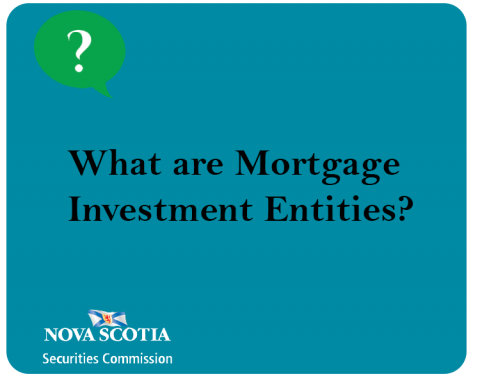Submitted by nsscadmin on

A mortgage investment entity (MIE) has similarities to syndicated mortgages, which we wrote about last week. The major difference between the two is that a syndicated mortgage is usually an investment in one mortgage held on one property, while an MIE is an investment in multiple mortgages issued against multiple properties.
An MIE is also referred to as a mortgage pool or mortgage investment corporation. It is a mortgage financing business that lends money to borrowers taken from a pool of money raised from investors.
An MIE provides mortgages to borrowers to purchase real estate. This could be a house, a commercial property or a development. Borrowers who take out loans from an MIE typically cannot obtain similar loans from more conventional sources like a bank or credit union. This makes them high-risk borrowers. To help mitigate this higher risk an MIE will usually hold several different mortgages.
An investor in an MIE purchases securities issued by the MIE. These could be shares or some kind of units. The value of their securities is derived from the value of the pool of mortgages that the MIE has issued, which are then secured by the real estate properties. Notice that they are secured, but not guaranteed. Investors earn income through the interest payments made on the mortgages.
Most MIEs are private and are not traded on an exchange. This can make them very illiquid and difficult to sell making them a risky investment. Other risks that come with MIEs include:
The potential for a decline in investment value. If borrowers fail to make their payments or decide to pay off their mortgage early, it can affect the value of your investment and decrease your interest payments.
Mortgage default. High risk loans have a greater chance of default. If several of the mortgages in your MIE portfolio default it can drastically hurt your payments.
Low priority. MIE mortgages are never the first in-line if a borrower defaults into foreclosure.
